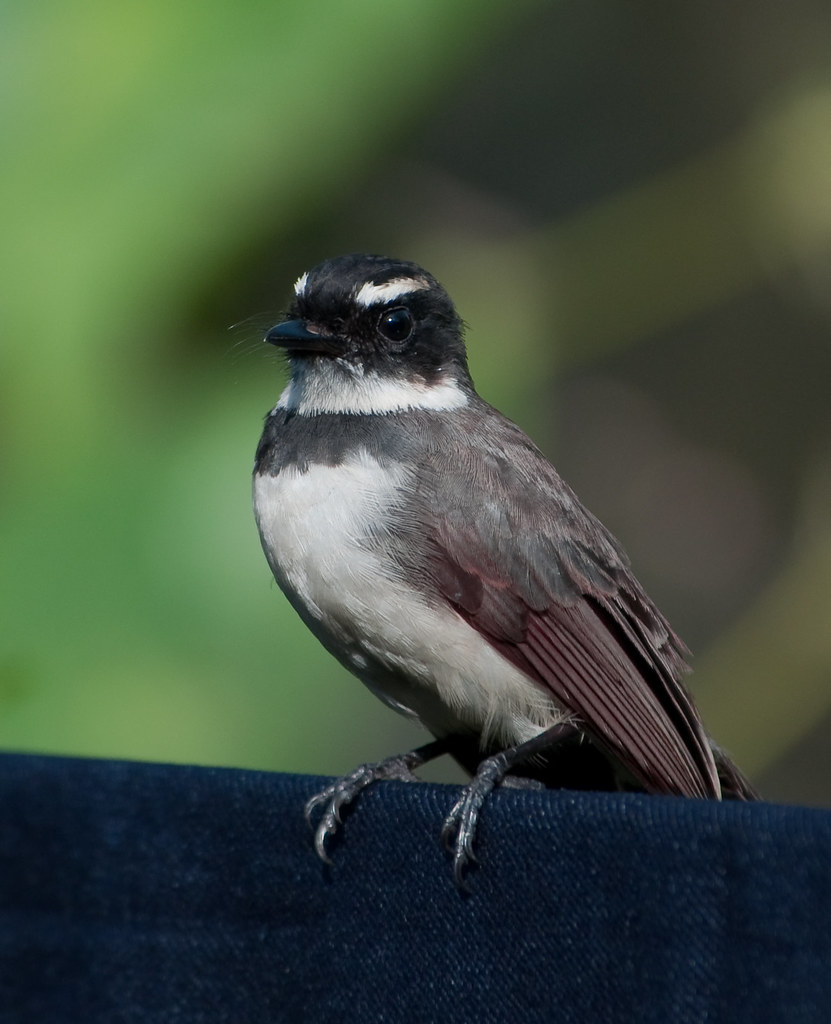1. Clothes - this is debatable. If you have a reeeeeally long lens and can take a decent photo from outside the bird's comfort zone, wear whatever you like. But if you want to get real close without being seen or disturbing the bird, you will need camo.
2. Shoes - this will depend on the trail you will trek but I advise the best hiking shoes you can find. Bird photography sometimes involves a lot of walking.
3. Camera - this will be a long one.
Okay, a bird is not like a human model who you can bring into a photo studio and have pose at your will. All bird pictures are once in a lifetime. They won't be there again tomorrow and do the exact same pose even of you sold your soul to the devil. And even if they do, the lighting won't be the same.
Under this reason, one of course should use the best camera you can afford. What kind? Any D/SLR that can shoot at at least 4fps. Why? There is this thing called 'mirror slap'. No, it's not the fact that when you see your face in the mirror, you want to slap that ugly mug. Mirror slap is the vibration that happens when the camera takes a picture. This causes camera shake, and of course blur. You won't want to have blurred images. And camera shake is very pronounced with long lens photography.
As for me, I am a Nikon user and I use a D90. I chose the D90 because of the video. But if you ask me what Nikon Camera is the best for avian photography, I would say the D3, then the D300 and then MAYBE the D300s. I have road tested both the D3 and the D300 and that is why I vote for these. As for the D300s, well, it has video.
As for other brands, I have seen the following cameras from Canon that really performs well. 1DMkII, 5DMkII, 50D and the 40D. These are great for birding. Especially the ones with Video capability.
Also, choose the camera with the best reviews on High ISO images. This is important because birds are so skittish and you will need very high shutter speeds. In dark areas, you will need good ISO handling so you can maintain your aperture and shutter speed.
4. Lens - I personally use the legendary Nikon 80-400VR. This is legendary because this is the first lens that Nikon came out with that has VR. Some say the 80-400 has f8 as its sweet spot and at wide open (f5.6) it is soft. Well I beg to disagree as I have a lot of photos taken at f5.6 that I think are sharp.
If you don't believe me, look at this:
 I rest my case. :p
I rest my case. :pOr maybe I was just lucky to have a good copy of this lens.
Other lenses from Nikon that I admire are the 70-300VR and the 500f4 of course. Prime lenses are of course the best.. priced. Haha! Just recently, the new 300 2.8 was announced by Nikon and I am positive that this will be a great lens for birding even with a 2x TC.
From Canon, their super telephoto lineup is also great. Their 800 5.6 L is incredible and also lighter than their 600 5.6 so that would be a good choice if you have a deep pocket. If not, their 400 5.6L is also a good and affordable choice but it does not have IS (VR in Nikon talk)
5. Tripod - when you have heavy gear, a tripod is a must. Camera shake is your worst enemy in long lens photography and this is solved by either a high shutter speed, a good tripod, or a combination of both. I know Gitzo is a great brand but herein the Phil, Manfrotto's line-up is very well known. Go for the biggest tripod that can accomodate at least twice the weight of your camera and tripod head for 100% sure stability. And speaking of tripod heads, ball-heads are out of the question. These are too frail for your birding rig. Benro's Gimbal head offers the best support, stability and movement.
Alright! These are the basics. Let's get into birding!
No comments:
Post a Comment